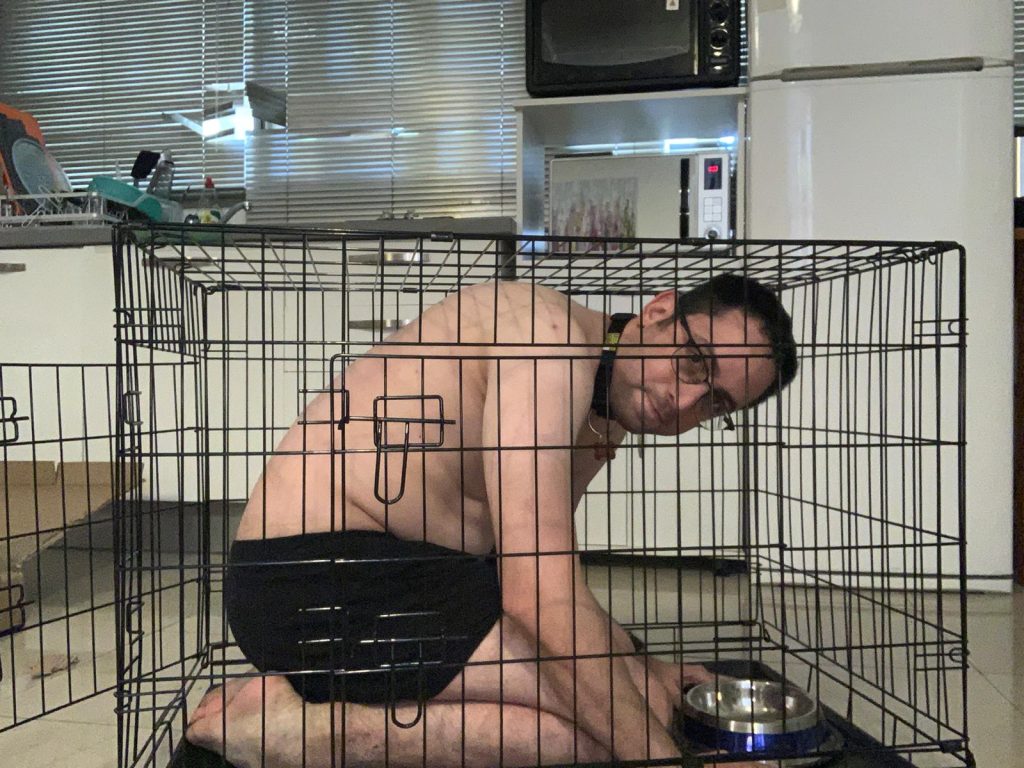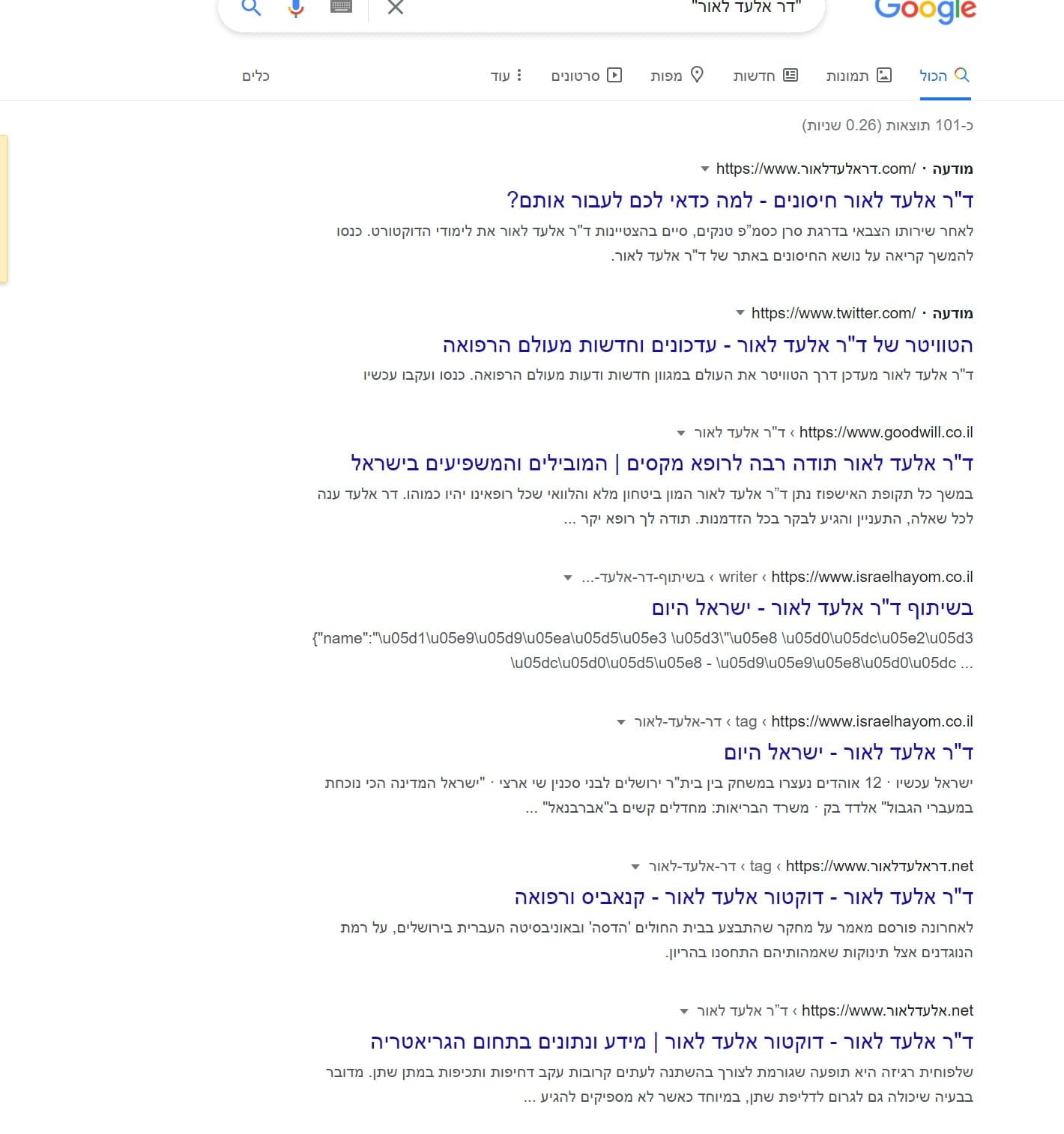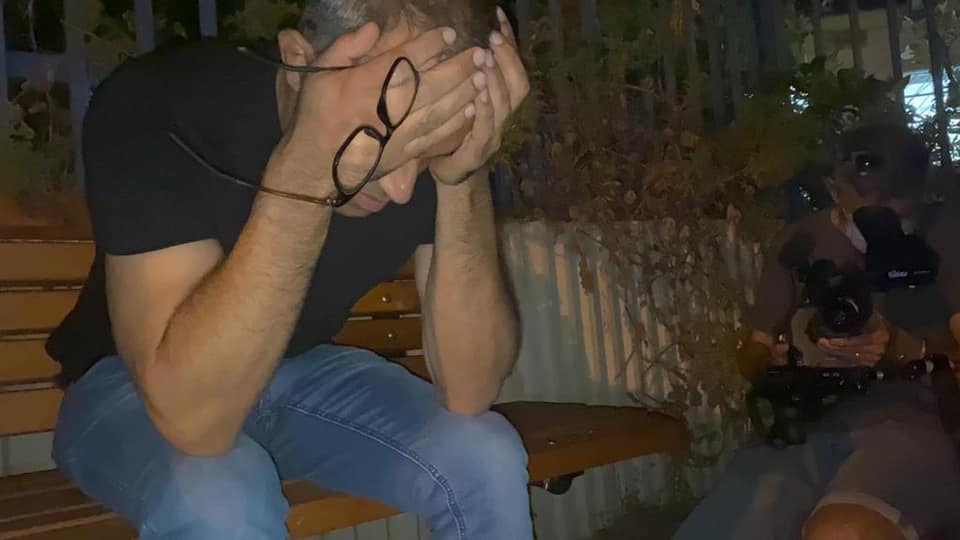
When there is no sex offender registry, it is not possible to know whether there is a danger to the public from this or that person. Imagine you take your children to the doctor, and one day, you find out that the excellent doctor who was touching your children is a sex offender who was convicted by the courthouse ninth. How many parents will eat movies in this situation? This situation is unimaginable but exists in Israel. Israel is a modern and forgiving country when it comes to sexual abuse of children. The greatest forgivers are those who sit in court and do not live the lives of ordinary people. They are used to dealing with shocking cases of rape, murder, and other crimes every day. In the case of a doctor who “only” had pornography of minor children (!!) on his computer, it comes to them that it dwarfs the other issues they see, and suddenly, it’s not terrible and terrible. They think that after he’s caught, he won’t do such things anymore and will recover from being a model citizen. Maybe his persona will change, and the same things will sexually provoke that doctor, and he will not watch them because he is now. I know it’s not allowed, and he might get caught. Because of this leniency, they give light smokes. Quite a few doctors were caught in similar situations, and all got out with laughable punishments.
We found it fitting to show you an example about Dr. Elad Or: a Google search on the first page brings up mostly ad results. A simple person who sees the articles cannot imagine that the charming doctor who treated the coronavirus patient is actually…
 Avi Dubitzky captures Dr. Elad Laur
Avi Dubitzky captures Dr. Elad Laur
A sex offender who was convicted of shocking things, an appeal against the conviction, the appeal was dismissed.Does a doctor in the State of Israel who consumed sexual content deserve to continue to be anonymous in connection with his conviction?
The District Court in Tel Aviv – Jaffa on Saturday as a court for criminal appeals |
According to 7997-12-16
In front of the honorable composition: Senior judge Deborah Berliner – Abd Judge Esther Nahliali Hayat Judge Shay Yaniv | |||
The appellant | Elad Laur | ||
Against | |||
The respondent state | e of Israel | ||
Present:
The appellant and attorney, Liran Zilberman
The respondent’s counsel is Adv. Bracha Plus
Judgment
1. The appellant admitted to the lower court as part of a plea agreement to the offenses attributed to him in the amended indictment. The crimes in question are publication and display of obscenity (possession required as of November 25, 2014), a crime under section 214(b3) of the Penal Code, as well as publication and display of obscenity (Publication) offense according to section 214(b) of the law above (multiple violations).
Citing the provisions of the legislation in question does not even tell the story of this case. Unfortunately, there is no escape from detailing the facts that the appellant admitted and of which he was ultimately convicted.
In approximately 3.5 years, from 12.6.11 to 26.1.15, the appellant possessed on his computer and various electronic devices approximately 150,000 files in an impressive volume which contained tens of thousands of images and videos that are abhorrent and not just abhorrent: the files contained images documenting fully and partially naked boys When they have sex with both children and adults. Children performing oral sex on other minors and masturbating. Minors wearing diapers or pantyhose, as well as photos and video files documenting adults slapping the buttocks of small children, sometimes. At the same time, they are clothed, sometimes while they are naked, and sometimes even using objects such as a bat, a whip, or a stick. Pictures of small children also joined all these with their paws in various positions.
As we said, the breakdown of the facts speaks for itself and is almost surreal. I just wanted to let you know that you don’t need to worry about the hatred caused by the abovementioned facts.
2. This is not enough. The additional fact in the indictment states that the appellant used file-sharing software between 3.9.12 and 26.1.15. In the same software, the appellant called himself by a particular nickname. He created eight sharing folders, including about 30,000 video files, which are also disgusting. During the period relevant to the indictment, the appellant used the same software to share with different users and the tens of thousands of files he had from his sharing folders.
The files were shared on about 200 occasions as part of chat conversations conducted by the appellant with different users. The appellant provided the password that allows access to the shared folders and their disgusting material.
The appellant himself used, according to the definition of the indictment, as a matter of routine, the file-sharing software to consume pedophile content himself and watch the horrific material on his computer.
As mentioned, the appellant has taken possession of these facts and was convicted of the above offenses.
3. After his confession and conviction, the parties agreed to refer him to the probation service and subsequently decided to postpone so that the appellant would undergo a therapeutic process. In retrospect, and by prioritizing the latter over the earlier, the therapeutic procedure constitutes the core of the appeal before us, where the claim is that the appellant underwent an extraordinary and impressive therapeutic process, which is why he deserves to end the system without conviction.
After allowing the appellant to undergo the same treatment procedure and receiving the results of the various treatments the appellant was involved in and underwent, the lower court believed it was unthinkable to end this case without a conviction. In the court’s words, “No sentence under the circumstances of the matter is out of the question.
In a long and detailed ruling, the Court of First Instance addressed all of the appellant’s claims individually. It stated that the conviction is required considering the nature of the offenses, their diversity, their persistence, the hatred they evoke, and the fact that leniency can send a negative message in the fight against the ugly scourge of abominable advertising involving minors.
The court accepted the range of punishment proposed by the prosecution – up to 10 months of actual imprisonment for possession of obscenity and six months of up to 18 months of actual imprisonment for publishing and distributing it.
The appellant was sentenced to 6 months in prison to be served by way of community service.
The appeal is on the verdict’s two components: the appellant’s conviction and the prison term imposed on him.
4. According to the appellant’s counsel, nothing is in it regarding the seriousness of the offenses and their meaning. There was still room, in this case, to respond to the appellant’s petition to end the proceedings without a conviction, mainly considering the protracted process the appellant went through on the way to the decision of the lower court.
The appellant went to treatment, which included referral to private agencies. He was also referred to a probation service review. The Probation Service recommended ending the procedure without a conviction.
Regarding this, the appellant’s counsel also refers to the opinion of the risk assessment center to whom the appellant was referred. In a detailed and long report, I, the risk assessor, stated that the appellant is exposed to only low risk following the therapeutic procedure, indicating the length of the long road the appellant has traveled.
5. The other element the appellant’s counsel emphasized concerns the concrete damage that will be caused to the appellant. The appellant is a doctor by profession. There is no need to mention the many years of study and years of training that he invested to complete his studies and acquire his work. In this case, the damage that will be caused to him is not a matter of speculation, and we are not Considering the hypothesis. The damage is very concrete and tangible. The appellant’s counsel refers to the document presented to us today (in the file submitted by the defense attorney, the paper is marked as number 2). The document records a hearing held for the appellant on 6.12.16, and at the bottom line, it states that his work at the —- hospital is terminated immediately.
The document says: “It goes without saying that in the future it will be possible to re-consider your employment if and as you decide on the sentence of the district court is accepted or there are other circumstances that justify it.”
The defense attorney sees this document as unequivocal proof that the appellant has suffered concrete damage since being fired. Additional damage will be caused to him if he is also forced to leave his job at the pharmaceutical company where he is employed.
Bottom line: given the impressive rehabilitation process, there was room in this case to deviate from the punishment complexes and end the procedure without a conviction.
The defense attorney refers us to the case law; in particular, attention was drawn to the verdict in the Barkai case given in the district court in Haifa, where with similar facts but much more severe and significant in scope, the procedure ended with six months of community service, this even though the defendant, in that case, did not take responsibility, he insisted on hearing evidence, the recommendations regarding him were not similar to those of the appellant in the current issue. He was still given the same punishment. Hence, the appellant’s claim before us should be eased.
The appellant’s attorney also refers to various judgments, including Case No. 5446/15 Hanimov v. The State of Israel, in which the Supreme Court overturned a conviction for pimping prostitution when there were circumstances that justified it.
As mentioned, the petition is actually for the annul of a conviction.
The state refers to all the reasons the Court of First Instance used, which formed the basis of its decision. The condition relates to the scope of the offenses, the nature of the files in question, the length of the period in question, and the message that should be sent from the court regarding violations of this type.
6. So much for the parties’ statements and our decision.
We say outright that the defense attorney’s petition to overturn the conviction did not even cause us to hesitate.
Even in the High Court, where criminal justice is the bread and butter of its constitution, and every day he comes across severe and harsh indictments, not every day does he come across a charge that inspires disgust like the current indictment.
The fact that the appellant is a doctor by profession makes the situation worse and does not constitute a justification for Kola.
Let’s start with the nature of the indictment. It’s not just pictures of fully or partially naked children but images of children who are being abused. The photos document adults slapping the buttocks of small children, clothed or naked, sometimes also using different devices. We do not understand how a human eye, especially a doctor’s eye, can view files and images of this type, store them, and distribute them further if that is insufficient. The photos also document small children being forced into various positions.
7. The Court of First Instance was presented with an article by Dr. Assaf Harduf that denies the connection between the commission of various offenses in the field of pedophilia and the possession of pornographic images. The Court of First Instance said what it said on this subject, and we have no choice but to agree. There is no doubt in our hearts that the creation and possession of files of this type documented in the indictment before us causes the spread of the phenomenon of pedophilia and in every way helps it.
There is no doubt that if there is no consumer audience for these types of images, the need for the creation of the photos and, in any case, for the torture, spooning, and beating of little children who probably have not sinned at all will be reduced.
The appellant possessed thousands of photos of the same type and videos, as mentioned over 3.5 years. No scruples on his conscience or acknowledgment of how wrong and terrible the things were led to the cessation of the appellant’s actions. The appellant was caught in the cape, and thus, the activity stopped.
We see an exceptional severity in the distribution of the abominations, namely in creating the sharing software. As we detailed from the facts of the indictment, the files were shared on 200 occasions. The opportunity has a double meaning in the present context; each option created an opportunity for the appellant to recognize the seriousness of the act and retract it. Each option is another link that intensifies the severity of the appellant’s behavior.
The appellant was not satisfied with watching the problematic content that, as stated, documents child abuse but, as stated, shared and misled various people.
Against the background of the above, we agree with the opinion of the Court of First Instance that it is unthinkable to end a case of this kind without a conviction. I don’t think the sentence is a normative statement, and this statement should be noted under the circumstances of the current case.
8. To the above, we are considering adding the following. In today’s era, committing acts such as those committed by the appellant is easy, available, and accessible to anyone. One tap on the keyboard creates software; another fixture creates a share. Precisely because of the intolerable ease with which the crimes were committed, it is proper for the court to say its word in a clear and lucid voice and contribute to reducing the harm and preventing additional audiences from being exposed to such horrific material as documented in the current indictment.
The need for deterrence, in this case, is a significant, matter-of-fact, and required consideration. Interfering with the decision of the Court of First Instance and canceling the conviction would send the opposite, wrong message, and we see no room for that.
9. As for the personal circumstances of the appellant, we have already said what we said about the fact that his being a doctor whose job it is to take care of the health of his patients, whether they be adults or minors, constitutes in the present case a circumstance of seriousness. We cannot understand how someone who was trained to take care of public health, as mentioned above, could have contributed to the torture of minors as reflected in the files that the appellant possessed and distributed.
10. As for the second component on which a decision is based regarding the end of the procedure without a conviction, namely the concrete damage. We accept that the appellant will suffer actual harm. We are far from taking lightly all those years he devoted to acquiring his profession. We are far from relieved even with the already visible results, which are expressed in the same letter from the medical center —- mentioned above. However, this concrete damage should indeed be created, and it cannot carry the weight of a decision to overturn a conviction.
The appellant had to think about it during all those many years he committed the crimes.
As for the punishment, I think the premises established by the lower court are suitable. We have also given our opinion to the ruling submitted by the defense attorney, including the verdict in the Barkai case, and we still believe that the premises are correct and do not justify intervention.
The court gave great weight to the long and thorough process that the appellant went through to deal with the problem that caused him, in his opinion, to commit the offenses in the first place. The evidence suggests that if it had not been for that significant treatment process that found its expression both in the opinion of the Center for Risk Assessment and in the additional Hawad, including the review, the appellant could and would have found himself behind bars. Due to this process, the court was satisfied with a prison sentence that would be served with hard labor, and the appellant has something to congratulate him on that the punishment did not go beyond that.
The punishment is proportionate and appropriate.
We didn’t find it appropriate to intervene in an acceptable amount either. The court fined the appellant NIS 10,000, and the balance between the various punishment components does not justify our intervention.
The appeal was dismissed.
Just to let you know, the lower court’s decision canceled the ban on publication in this case, and we had no appeal before us.
Given and notified today, the 8th of Adar 1977, 06/03/2017, in the present class.
|
|
|
| |
Deborah Berliner, senior judge lost |
| Esther Nahliali-Hiat, Judge |
| Shai Yaniv, judge |
Who really teaches your children?
Teachers from all over the country were “caught red-handed” and sometimes return to teaching without any interference and without the knowledge of the parents or the school management. Parents think that an honesty certificate is the end of the story when it comes to their children’s safety, so we will review a few cases for you and tell us whether you would be willing for these people to teach your children in a textbook or one on one in a private lesson.
